Miranda – The Mysterious Patchwork Moon
A Faulted And Dynamic Little World!
Discovered in 1948, Miranda was the 5th moon of Uranus to be discovered but the first in over 100 years and would turn out to be the smallest, innermost and last of Uranus’ five spherical moons. It’s known for having one of the most extreme topographies in the solar system including a strange patchwork surface and the highest fault scarp discovered!
Fast Summary Facts About Miranda!
- Discovered: February 16th, 1948 by Gerard Kuiper
- Name: Named after the character in Shakespeare's The Tempest
- Size: Diameter of 470 km (292 miles)
- Moon Rank: 19th Largest in the solar system
- Orbit: Prograde and circular
- Orbit Radius: 129,390 km from Uranus
- Orbital Period: 1 day, 10 hours
- Orbital Speed: 6.66 km/sec
- Orbital Inclination: 4.34° (10 times greater than the other large Uranus moons)
- Density: 1.20 g/cm3
- Surface Temperature: A chilly -213 °C (60K)
- Surface: Predominately water-ice (60%) with a rocky core
- Claim to Fame: The 5km high Verona Rupes - Solar System’s Tallest Cliff
More Cool Fun Facts About Miranda!
- Miranda hasn’t had many visitors, in fact, only the Voyager 2 probe in January 1986 has been to the Uranus system, where it sent back the only images (and much of the knowledge) we have about the little icy moon!
- Miranda is a strange creature that looks like it has been assembled with pieces that don’t quite match! It’s much smaller than the Earth’s Moon, so is considered unlikely to support much tectonic activity. Yet images of the surface reveal a relatively young surface of huge variety that must have experienced intense activity in the past. The most notable features are the three large chevron-shaped features known as "coronae," which are unique among known objects in our solar system.
- The coronae don’t have many craters, but lots of ridges and valleys, with a sharp boundary separating them from more cratered (and presumably older) terrain, giving the appearance of a mismatched patchy surface! Scientists still aren’t sure how they have formed…
- The features on Miranda are oversized too, its giant canyons put the Earth’s Grand Canyon to shame as they are over ten times as deep! That’s Crazy!
- The highest cliff in the solar system, Verona Rupes (up to 10 kilometres high!) is so high that if you threw a stone off the edge it’d take a full 10 minutes to land! How cool would that be to see!
- All this geological activity for such a small moon is believed to have been driven by tidal heating when Miranda was once in orbital resonance with the larger moon Umbriel. Although, scientists can’t agree on what processes have formed these strange features. One idea proposed soon after the Voyager 2 flyby, was that Miranda was shattered by a colossal impact, after which, the shattered pieces reassembled creating the strange patchwork pattern. I like this idea!
- Miranda is also one of the smallest objects observed that is in hydrostatic equilibrium (meaning that it has a spherical shape due to its own gravity). This is quite unexpected for cold small objects!
- Like the other large moons of Uranus, Miranda shares Uranus' extreme seasonal cycle on account of the planet orbiting the Sun on its side, so during the summer its North Pole faces the sun directly and winter is 42 years of darkness!
- Like Earth’s Moon, Miranda’s orbit is synchronous with its rotation period, meaning the same face of the moon always faces Uranus. A state known as tidally locked!
- It is believed that Miranda formed billions of years ago, from the accretion disc that surrounded the newly formed Uranus; perhaps even from debris from the colossal impact that pushed Uranus onto its side!
- Unfortunately, there are no plans for any future probes to visit Uranus (and its moons), but one day its hoped that a Uranus orbiter reaches this distant outpost!
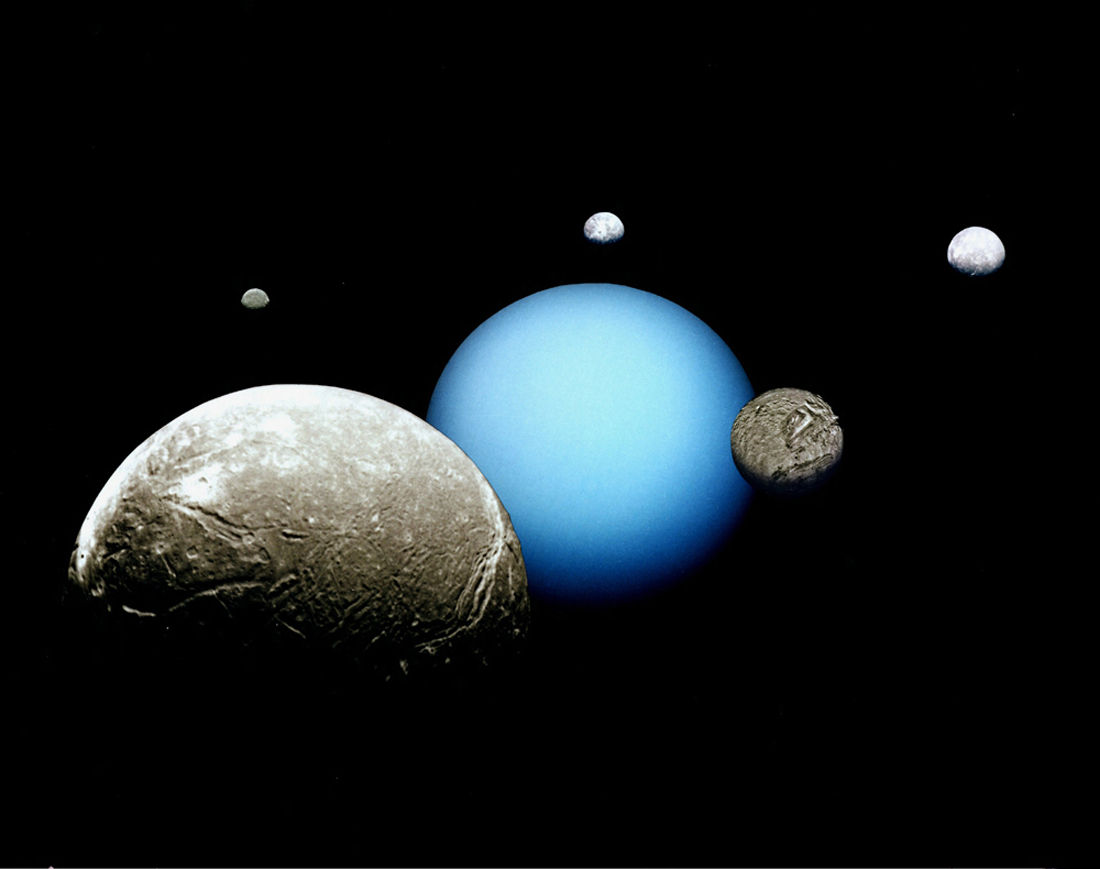
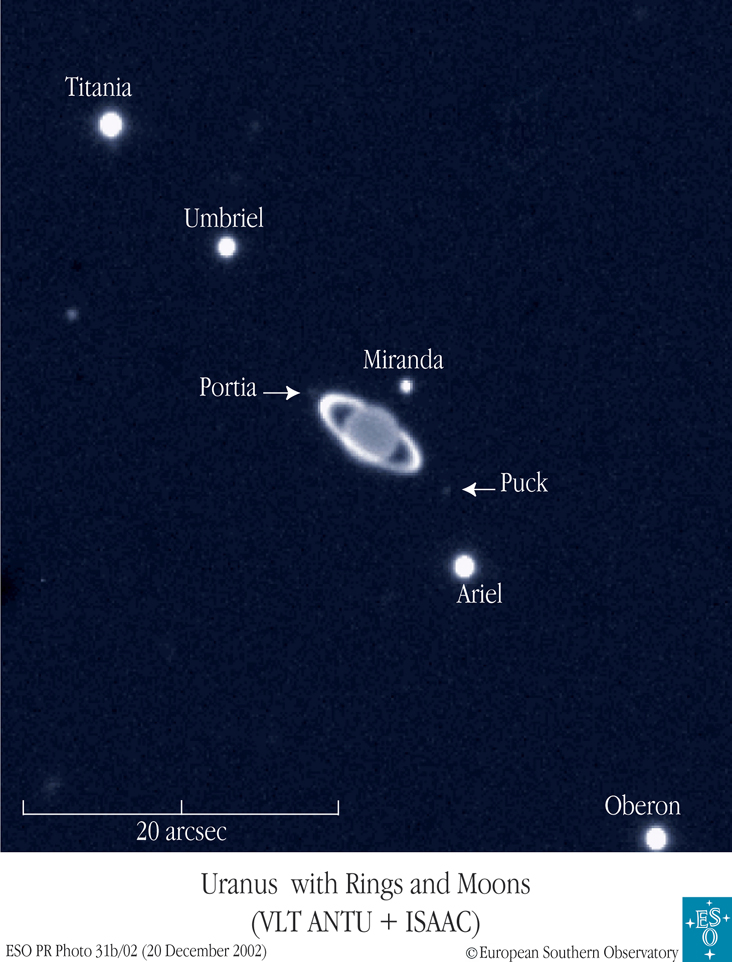
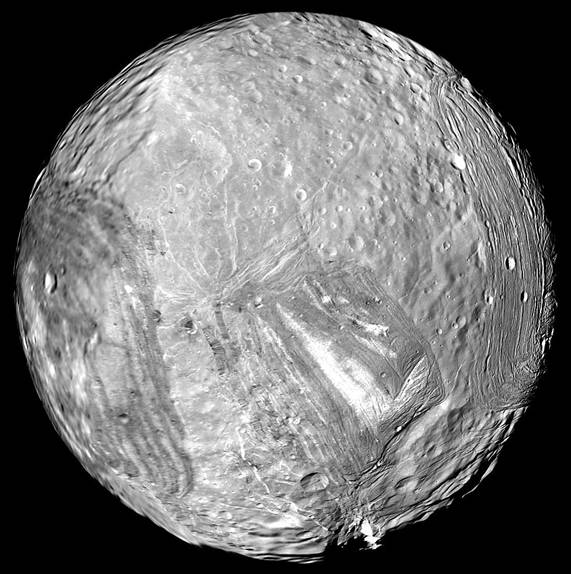
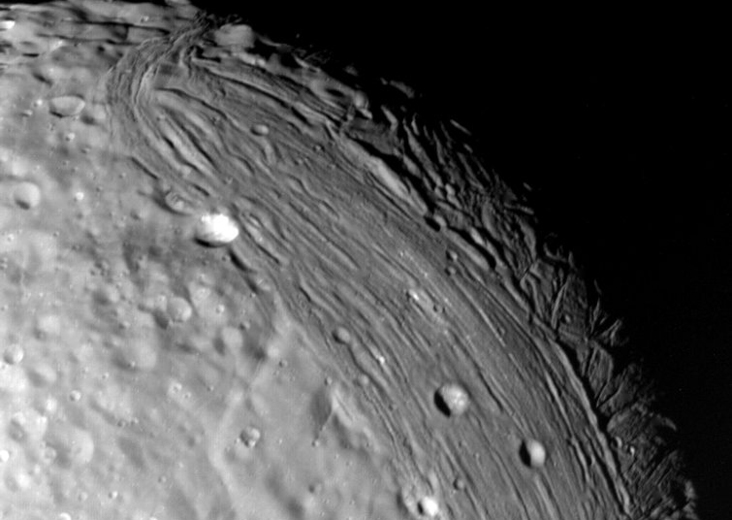
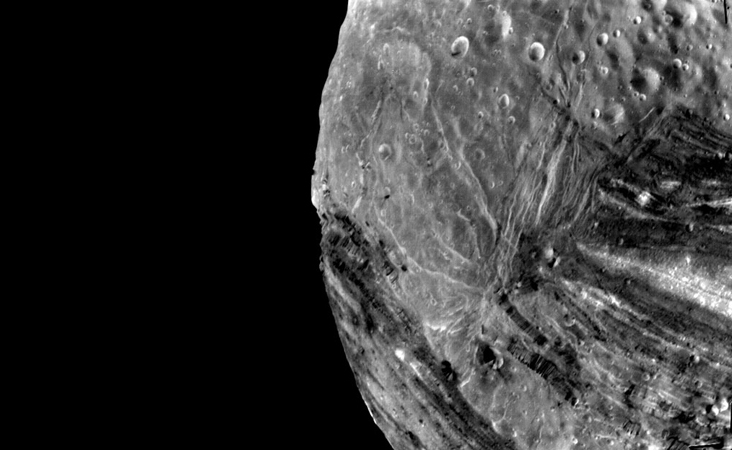
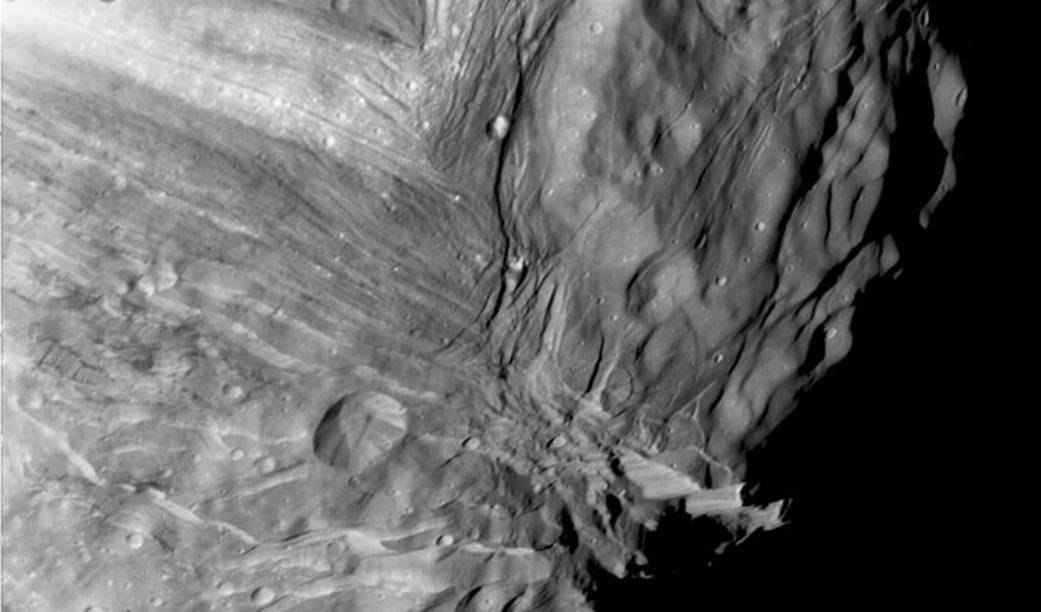
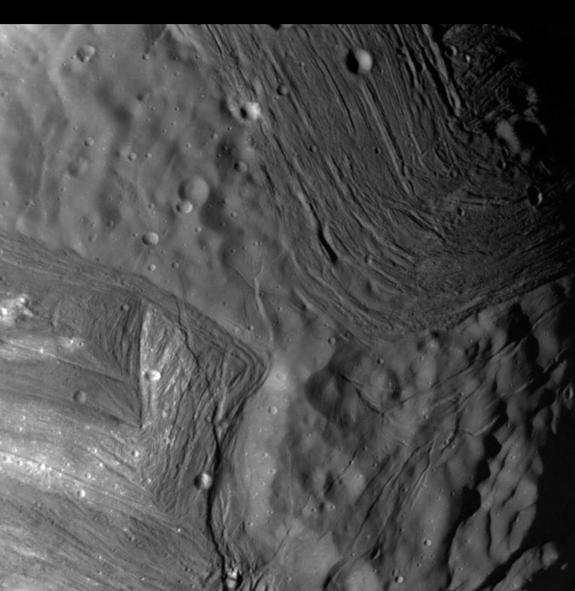
Uranus' Moons
Uranus' Moons From Earth
Miranda Global View
Miranda
Miranda Geology
Tall Scarps
Uranus' Moon Miranda











